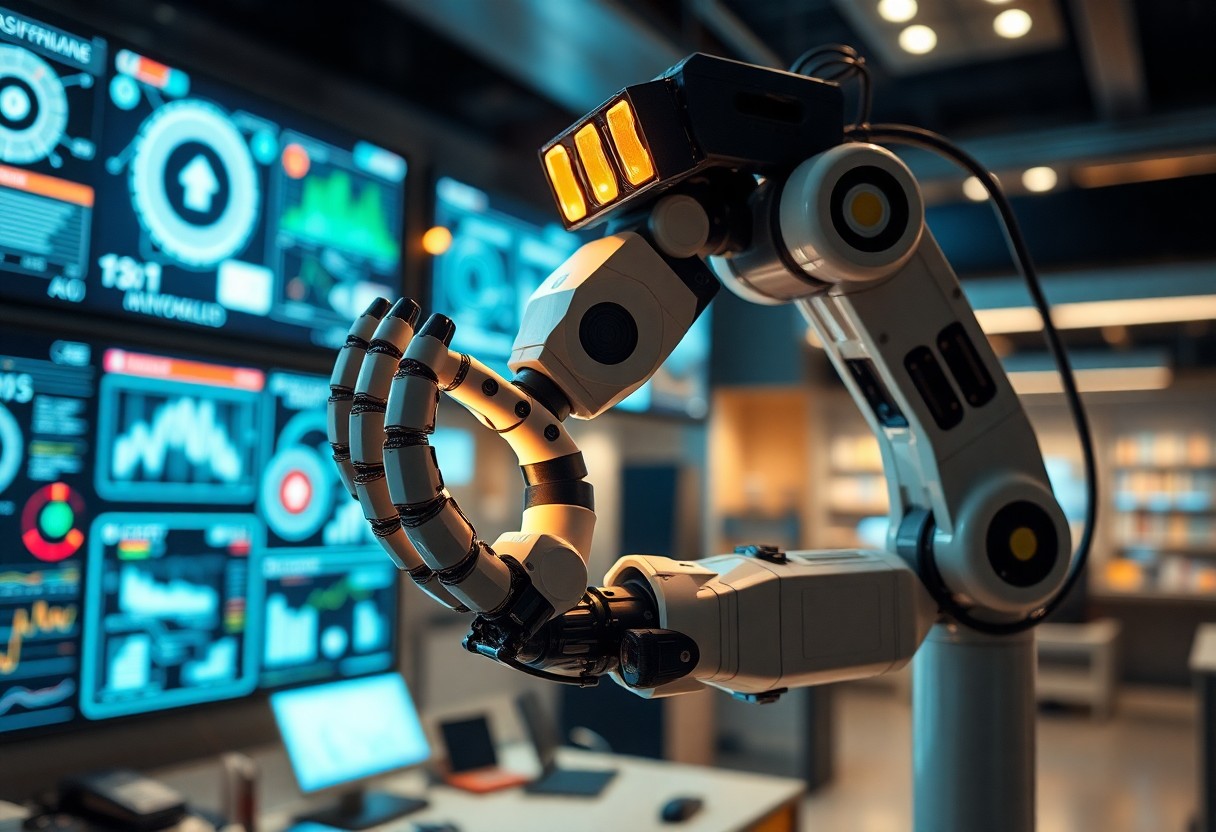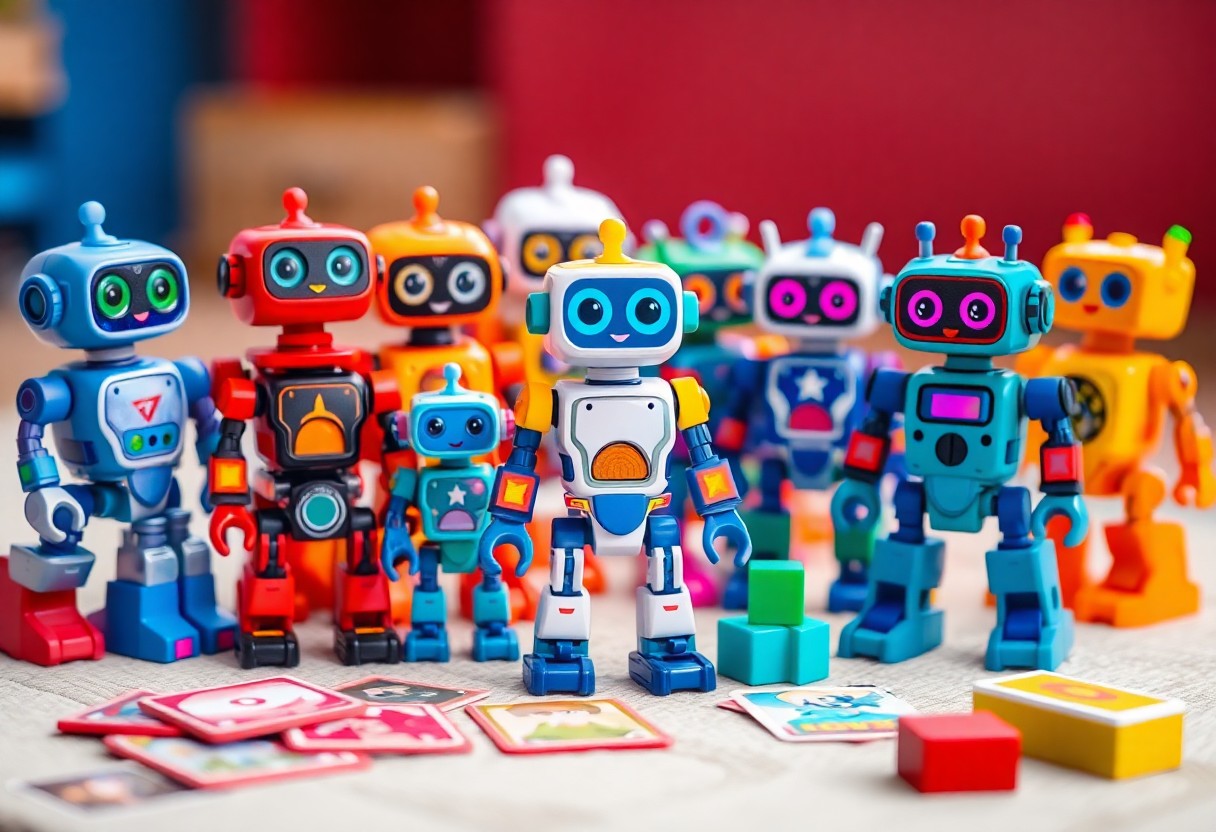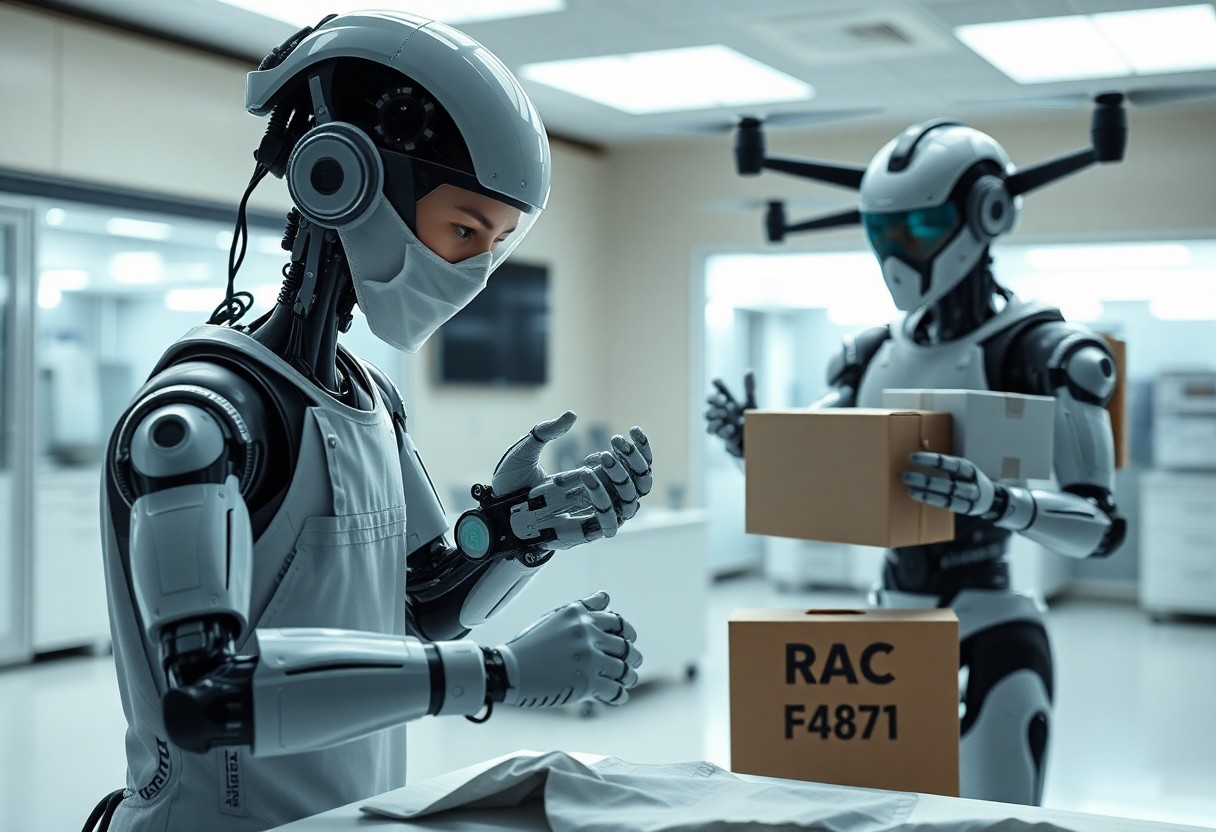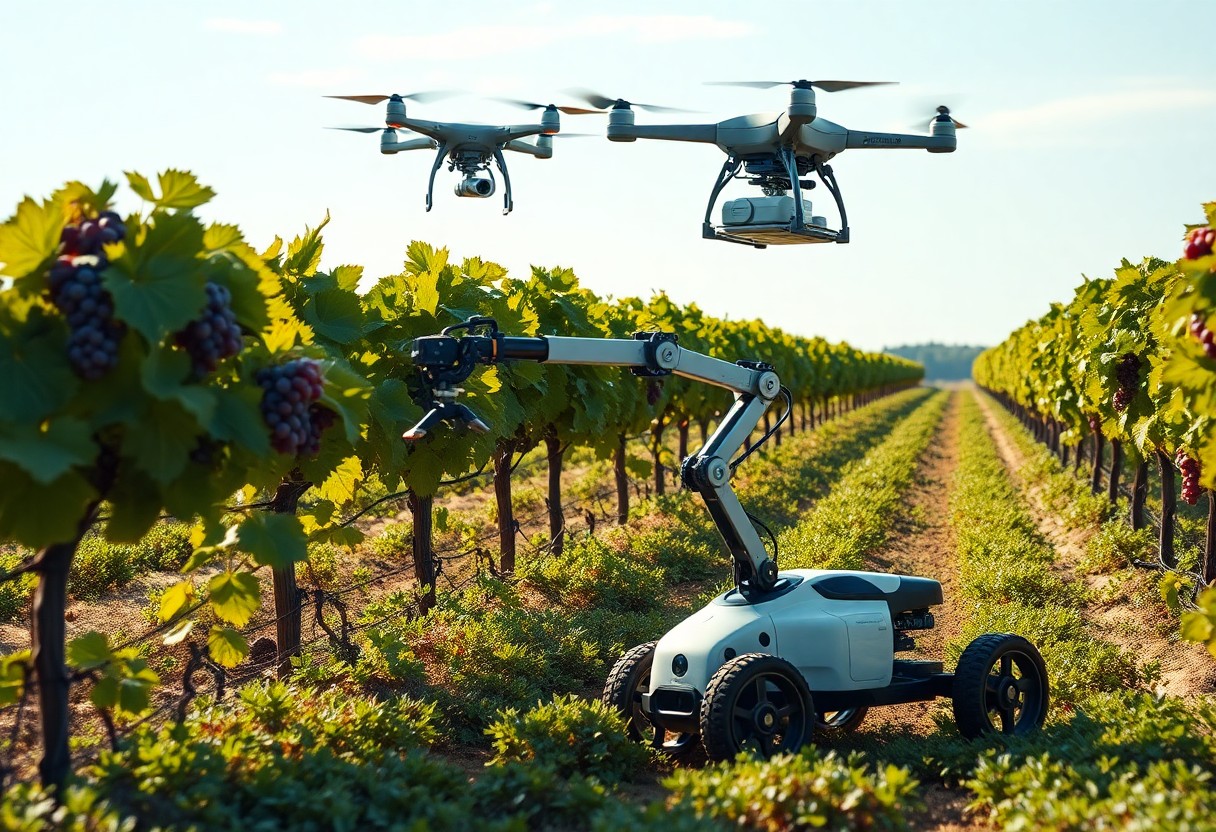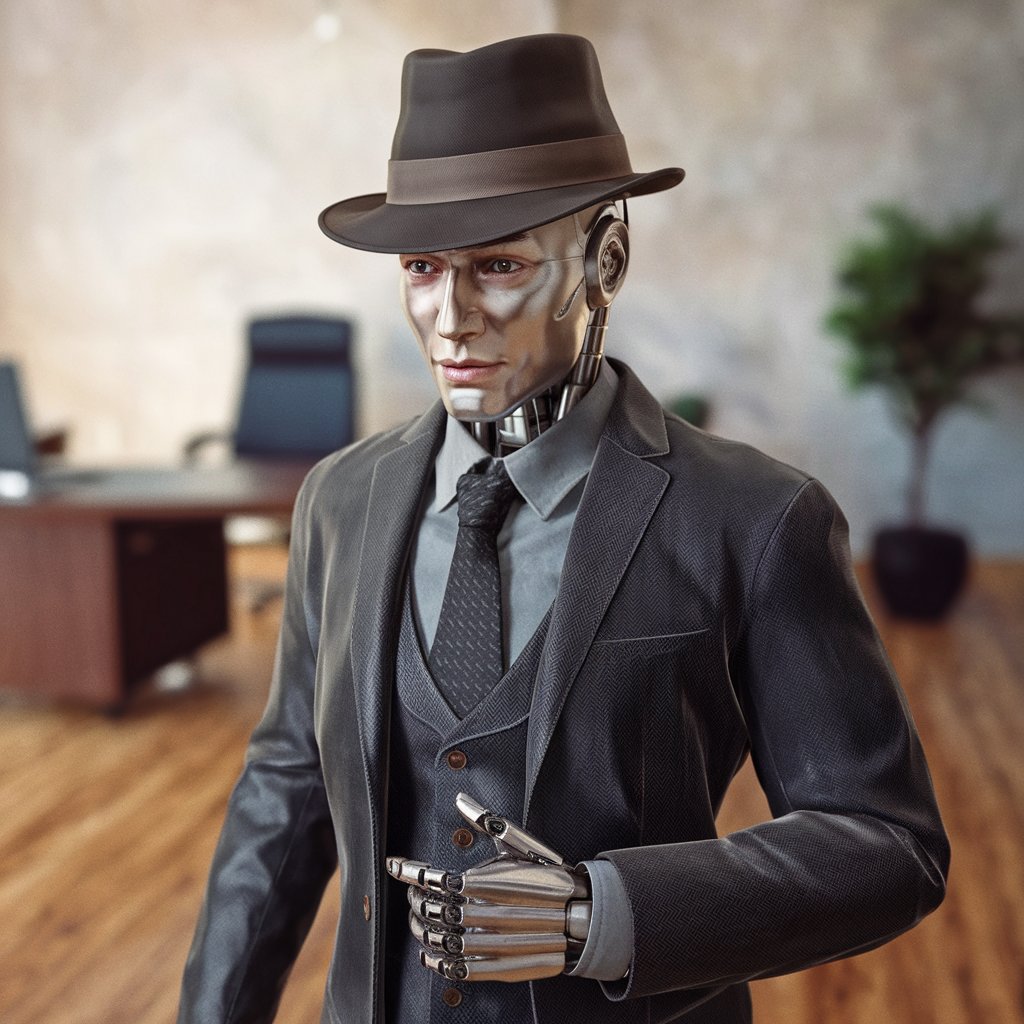There’s a significant shift in how robots interact with their environment, thanks to advancements in artificial intelligence (AI). You’ll explore how AI enhances robot perception through sensors and machine learning, allowing for better interpretation of data and surroundings. This technology also empowers robots to make informed decisions autonomously, improving efficiency across various industries. By understanding these AI applications, you can grasp the future of robotics and their growing capabilities in your daily life and work.
Overview of Artificial Intelligence in Robotics
Artificial intelligence (AI) has transformed robotics by enhancing the autonomous capabilities of robots, enabling them to learn from data, adapt to environments, and perform complex tasks. The integration of machine learning, computer vision, and natural language processing allows robots to interact intelligently with their surroundings, making them more effective in various applications ranging from industrial automation to personal assistants.
Definition of Robot Perception
Robot perception refers to a robot’s ability to interpret and understand sensory data from its environment. This encompasses processes such as object detection, depth perception, and environmental mapping, which allow robots to perceive, recognize, and respond to stimuli in a meaningful way. With advanced algorithms and sensors, robots can achieve a level of awareness vital for autonomous operation.
Importance of Decision Making in Robotics
Decision-making in robotics involves selecting the best course of action based on the robot’s perceptions and objectives. Effective decision-making enables robots to navigate complex environments, interact safely with humans, and optimize their tasks, ensuring efficiency and reliability in various applications, from manufacturing to healthcare.
Implementing advanced decision-making algorithms allows robots to evaluate multiple factors and potential outcomes before executing actions. For instance, in autonomous vehicles, AI algorithms process data from sensors to make split-second decisions that enhance safety and navigation. By using techniques like reinforcement learning, robots not only adapt their strategies over time based on experiences but also learn to handle unpredictable scenarios, improving their overall effectiveness and reliability in real-world situations.
Key Technologies in Robot Perception
Robot perception relies on foundational technologies that enable machines to understand their surroundings effectively. This includes advanced algorithms, sophisticated sensor systems, and AI-driven techniques, all of which contribute to a robot’s ability to interpret sensory data, identify objects, and make decisions. You can expect a blend of computer vision, sensor fusion, and deep learning to work in tandem, delivering the intelligence necessary for advanced robotic applications.
Computer Vision
Computer vision serves as the backbone of robot perception, allowing machines to analyze and interpret visual information from the environment. You’ll find that it employs algorithms to process images, detect objects, and even recognize patterns, enabling robots to navigate complex spaces. With machine learning advancements, these visual systems have improved significantly, offering high accuracy in tasks ranging from facial recognition to autonomous driving.
Sensor Fusion
Sensor fusion integrates data from multiple sensors to form a coherent understanding of the environment. You benefit from enhanced reliability and precision, as this technique combines information from cameras, LiDAR, ultrasonic, and other sensors. By leveraging various data inputs, the robot can create a more comprehensive picture of its surroundings, which is important for decision-making processes.
In practice, sensor fusion elevates robot perception by mitigating the limitations of individual sensors. For example, a robot may use LiDAR for precise distance measurements while relying on cameras for object recognition. This combination minimizes errors that could occur if relying on a single sensor type. The robustness gained from sensor fusion is evident in applications like autonomous vehicles, where real-time data integration from dozens of sensors can mean the difference between safe navigation and collision. With ongoing advancements, the interoperability between diverse sensors continues to enhance the situational awareness of robots in dynamic environments.
Machine Learning Techniques for Decision Making
Machine learning techniques empower robots to make informed decisions by analyzing vast amounts of data and deriving patterns. Utilizing tools like reinforcement learning and neural networks, robots adapt their behavior based on experiences rather than following a rigid set of pre-programmed commands. This adaptability leads to improved performance in complex environments. For insights on how AI enhances robot perception, see 6 Ways AI is Improving Robot Perception and Navigation.
Reinforcement Learning
Reinforcement learning enables robots to learn optimal actions through trial and error, receiving feedback from their environment. By rewarding or penalizing actions based on their effectiveness, robots can improve their decision-making capabilities over time. This technique is particularly useful in dynamic settings where pre-existing maps or rules may not apply.
Neural Networks
Neural networks, a subset of machine learning, closely mimic human brain functions to process information. They excel at recognizing patterns and making predictions based on complex datasets, which is necessary for tasks like image and speech recognition in robotics. These networks consist of layers of interconnected nodes that adjust their weights through training, allowing for more precise decision-making in varied scenarios.
Neural networks can analyze sensory data from the robot’s environment, such as images captured by cameras or signals from sensors, and make decisions based on these inputs. For instance, a robot equipped with a convolutional neural network can identify objects in real-time, facilitating navigation and interaction. This advanced capability allows robots to perform tasks in unfamiliar settings and enhances their autonomy and adaptability, making them indispensable in fields ranging from industrial automation to healthcare.
Applications of AI in Robot Perception and Decision Making
AI has transformed robot perception and decision-making across various sectors, enhancing efficiency, accuracy, and flexibility. By integrating advanced algorithms, robots can process sensory data, interpret complex environments, and execute tasks autonomously. Whether in autonomous vehicles navigating busy streets or industrial robots optimizing manufacturing processes, AI applications are revolutionizing how robots interact with the world and perform specific functions.
Autonomous Vehicles
In autonomous vehicles, AI drives the perception and decision-making processes crucial for safe navigation. These vehicles utilize sensors, cameras, and machine learning algorithms to detect obstacles, traffic signs, and pedestrians. Through real-time data analysis, they make split-second decisions, ensuring passenger safety and compliance with traffic regulations, ultimately paving the way for smarter urban mobility.
Industrial Robots
Industrial robots leverage AI for enhanced perception and decision-making capabilities, streamlining production lines and increasing operational efficiency. By employing techniques such as computer vision and deep learning, these robots can identify defects, manage inventory, and perform quality control tasks with remarkable precision, reducing downtime and optimizing resource allocation.
The use of AI in industrial robots has showcased significant advancements in automation. Robots equipped with AI can analyze visual data to detect subtle variations in product quality, enabling them to address issues before they escalate. In a manufacturing plant, for instance, a vision-guided robot might use algorithms to sort defective items from the production line, ensuring that only high-quality products reach consumers. This level of efficiency reduces costs and improves overall output, making AI-equipped industrial robots indispensable in modern manufacturing environments.
Challenges in AI-Driven Robot Perception
Various challenges impact the efficacy of AI-driven robot perception, affecting their ability to operate reliably in diverse environments. These obstacles range from environmental variability to ethical considerations, each posing unique difficulties that engineers and developers must overcome to enhance robot performance. Addressing these challenges is key to advancing the field and ensuring safe, effective robot deployment.
Environmental Variability
Your robots need to adapt to changing environments, which can significantly affect their perception abilities. Variations in lighting, weather, and terrain introduce complexities that can confuse sensors and algorithms, leading to incorrect interpretations of surroundings. For example, a robot relying on vision systems may struggle under low light or extreme brightness, necessitating a more robust perception framework capable of handling these fluctuations.
Ethical Considerations
AI in robotics raises ethical questions that you must address, particularly surrounding autonomous decision-making. As robots gain capabilities to interpret data and act independently, concerns arise about accountability, bias in algorithms, and the potential for unintended consequences. The decision-making process must sufficiently align with societal norms to prevent harm and ensure public trust in technology.
Ethical considerations extend beyond mere algorithmic fairness; they encompass broader implications of robots performing tasks once done by humans. Scenarios involving autonomous vehicles, healthcare robots, or military drones can lead to significant moral dilemmas. For instance, should a self-driving car prioritize the safety of its occupants over pedestrians in an unavoidable accident? Such decisions require careful thought and transparent guidelines to ensure accountability and societal acceptance. Engaging with ethicists, policymakers, and the public can help shape responsible AI applications in robotics, fostering a balanced approach to technological advancement.
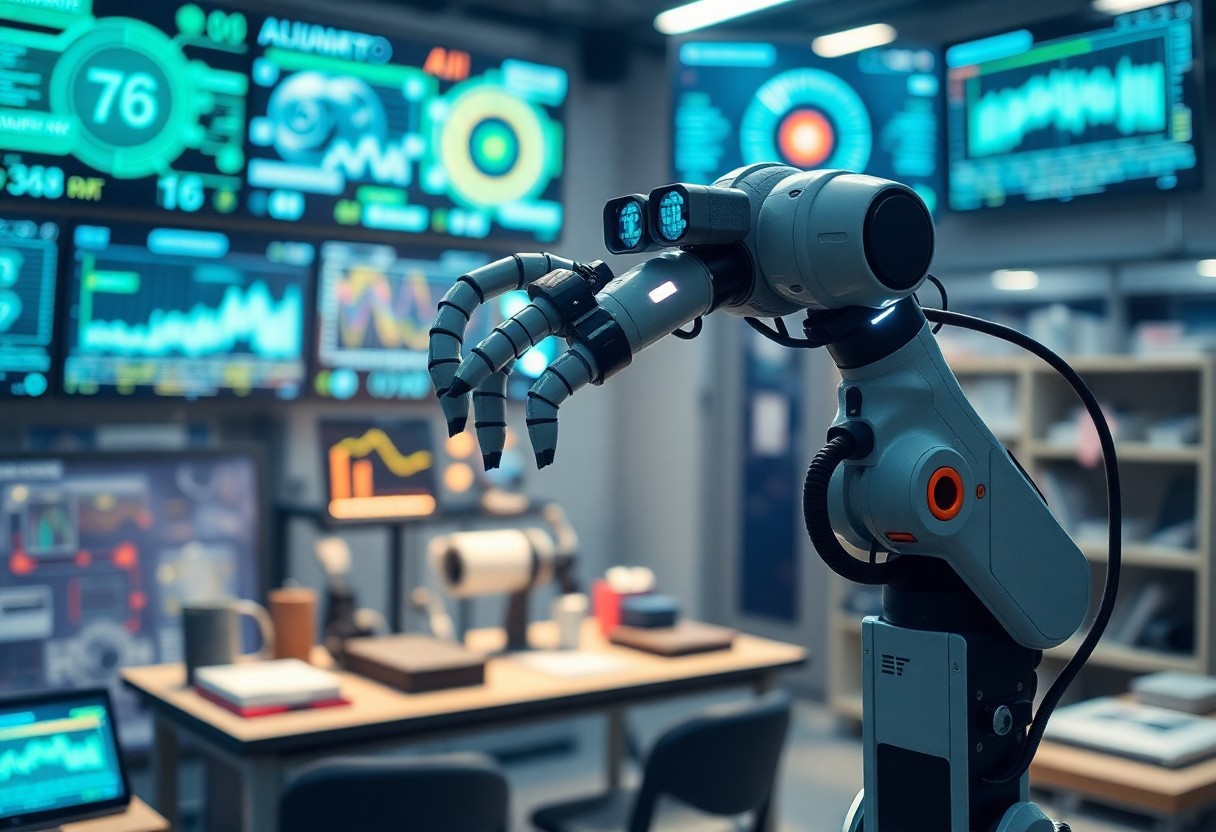
Future Trends in AI and Robotics
Emerging trends in AI and robotics indicate a shift toward more autonomous systems that seamlessly integrate into daily life. You can expect advancements in machine learning capabilities, allowing robots to adapt to diverse environments and perform complex tasks without explicit programming. Collaborative robots, or cobots, will become more common in workplaces, enhancing productivity and safety. Additionally, breakthroughs in natural language processing will enable robots to better understand and respond to human commands, making interactions more intuitive and efficient.
Advances in AI Algorithms
New AI algorithms are enhancing robotic capabilities by improving learning efficiency and adaptability. Techniques such as reinforcement learning allow robots to learn from trial and error in real-time, minimizing the need for pre-programmed responses. You will see algorithms that can process and analyze massive datasets, leading to smarter decision-making in unpredictable environments, increasing the reliability of autonomous systems.
Integration of AI in Everyday Robotics
AI’s integration into everyday robotics is accelerating, shaping how you interact with technology at home and work. Smart appliances, lawnmowers, and personal assistants now leverage AI for enhanced user experience, automating tasks while learning preferences over time. Such seamless integration allows for greater adaptability, resulting in significant time savings and increased convenience in daily activities.
Smart home devices demonstrate this integration vividly. For example, AI-powered thermostats learn your heating and cooling preferences, adjusting settings automatically for optimal comfort and energy efficiency. Additionally, robotic vacuums equipped with AI navigate obstacles, mapping out your home for systematic cleaning. As you adapt to these intelligent systems, they will refine their operations based on your behavior, making them increasingly responsive to your needs, paving the way for further innovations in robotics that simplify and enhance your daily life.
Conclusion
Upon reflecting, it’s clear that integrating artificial intelligence into robot perception and decision-making significantly enhances their ability to interact with complex environments. You harness advanced algorithms and sensory data to equip robots with a deep understanding of their surroundings, enabling smarter, more autonomous actions. This synergy not only broadens the applications for robotics across various industries but also empowers you to push the boundaries of innovation, making robots more efficient and capable than ever before.

